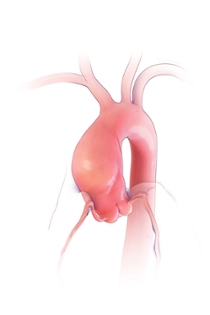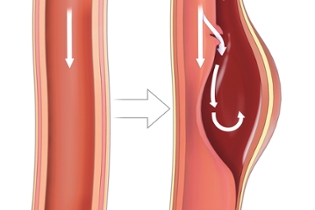Aortic related health conditions account for significant cardiovascular morbidity and mortality rates globally. As the population ages, incidences of aortic diseases are expected to rise. Screenings and diagnostic tests of aortic disorders has improved over the past 20 years, allowing for earlier diagnosis and therapeutic intervention.

Aortic Conditions
Aortic Conditions
Aortic Aneurysm
Aortic aneurysms happen when the wall of the aorta weakens, causing it to balloon or expand. As the aneurysm grows larger, it can rupture (burst) or dissect (tear).
Aortic Dissection
Aortic dissection is a tear that begins in the inner lining of the artery wall. Blood is forced through this opening, where it builds up between the vessel walls and can eventually rupture the outer lining of the artery.
Aortic Transection
Aortic transection is a tear in the aorta, usually right at the beginning of the descending thoracic aorta. It is often caused by an injury during a car crash.
Infected or Mycotic Aortic Aneurysm
An infected aortic aneurysm is a type of aneurysm that happens when bacteria or other germs enter the blood stream and infect the wall of the aorta, eventually causing it to weaken.
Aortoiliac Occlusive Disease
Around the belly button, the aorta splits into the iliac arteries, which carry oxygen-rich blood through the pelvis and into the legs. Aortoiliac occlusive disease is a form of peripheral arterial disease (PAD) that affects this region of the circulatory system. PAD is a condition that develops as a result of atherosclerosis, a buildup of fatty deposits and plaque in the lining of arteries.
Make an Appointment
To make an appointment, please call 404-778-7777.


